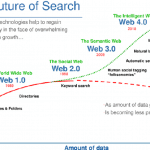The global hedge fund industry is expanding and growing faster than at any previous rate. To date, more than 16,000 hedge funds are running their business globally with an asset value of more than $3.6 trillion, according to Investopedia. The idea of virtualization and sharing computing resources across different systems and regions significantly lowers the capital cost and … [Read more...] about 5 Secrets of Cloud Testing for Hedge Funds
Strategy
Learn everything about data strategy, what it should include in order to be successful, and how you can develop a data-driven business strategy for your business.
The Most Pervasive Mistakes to Dodge Throughout a Cloud Migration
Cloud migration “ Overview During a cloud migration, a business transfers part or all of its data center capabilities to the cloud, often to operate on cloud-based infrastructure supplied by a cloud service provider such as Amazon Web Services (AWS), Google Cloud, or Microsoft Azure, among others. Migration to the Cloud The process of migrating workloads to the cloud is a … [Read more...] about The Most Pervasive Mistakes to Dodge Throughout a Cloud Migration
History of the WorldWideWeb: from web 1.0 to web 3.0!
World Wide Web, generally known as the Web, is a system of linked hypertext documents accessible over the Internet. Using a program known as a Web browser, you can view pages that can contain text, images, streaming media such as video or music, and almost any modern-day multimedia element. One of the great successes of the system was the connection between the pages through … [Read more...] about History of the WorldWideWeb: from web 1.0 to web 3.0!
Understanding Global AI Policy Regulations
How do the Chinese and American AI policies compare In recent years the Intelligent Automation industry has boomed. Computing power has finally reached the required processing capacity to enable various AI applications and innovators in the field have truly been developing some exciting use cases for the technology. However, with this innovative progress we have seen the … [Read more...] about Understanding Global AI Policy Regulations
Utilizing Conversational Analysis to Maintain Accurate Audience Data
For any business, data is a great tool to understand your audience and their brand perception. Data helps inform decisions about marketing and the best ways to approach customers. However, because so many consumer interactions with brands are quick and social, it is tough to make sense of what you're seeing. We'll explain what conversational analysis is and how big data … [Read more...] about Utilizing Conversational Analysis to Maintain Accurate Audience Data
What is data strategy?
Data strategy, also called analytics strategy or business data strategy, is the organizing principle for an enterprise’s investments in data and data-related technologies. Data strategy provides a framework for thinking through the complex trade-offs in managing data as an enterprise resource.
It helps business leaders make decisions about where to focus their data investments and how to maximize the value of those investments. Want to learn more about data strategy? Datafloq has courses available. Contact us to get started.
How does data strategy work?
Data strategy starts with a clear understanding of an organization’s business goals. From there, it defines the role that data will play in achieving those goals and outlines a plan for how to get the most value from data. Data strategy is an essential part of any organization’s overall data business strategy.
When done well, it can help organizations make better use of their data and gain a competitive edge. But when executed poorly, it can lead to wasted resources and missed opportunities. Data strategy is not a one-time exercise; it should be revisited regularly as an organization’s business goals and needs evolve.
What are the four big data strategies?
Big data can be a big help when it comes to making decisions for your business. But how do you make sense of all the data out there? One way is to use the four big data strategies:
- Performance management — Helps you track and improve your business’s performance.
- Data exploration — Helps you understand your data and find hidden patterns.
- Social analytics — Helps you analyze data to understand customer behavior.
- Decision science — Helps you use data to make better decisions.
These strategies can help you get the most out of your data and make better decisions for your business.
What should a data strategy include?
A data strategy should be designed to help an organization achieve its business goals. It should be aligned with the organization’s overall data business strategy to be effective, considering its unique needs, such as its size, industry, and geographic location.
The data strategy should also define the roles and responsibilities of those responsible for managing the data. Finally, the data strategy should identify the tools and technologies that will be used to collect, store, and analyze the data. By considering these factors, an organization can develop a data strategy to help it meet its business goals.
What is a big data strategy, and why should companies have the strategy in place?
Big data refers to a large number of data companies have access to. It can come from various sources, including social media, transaction records, and sensors. The challenge for companies is to make sense of this data and use it to improve their business.
A big data strategy helps companies to set goals and priorities for dealing with big data. It also helps them to invest in the right technologies and build the necessary expertise. Companies will struggle to get the most out of their data assets without a big data strategy. They will also be at a competitive disadvantage compared to those companies that have invested in big data.






